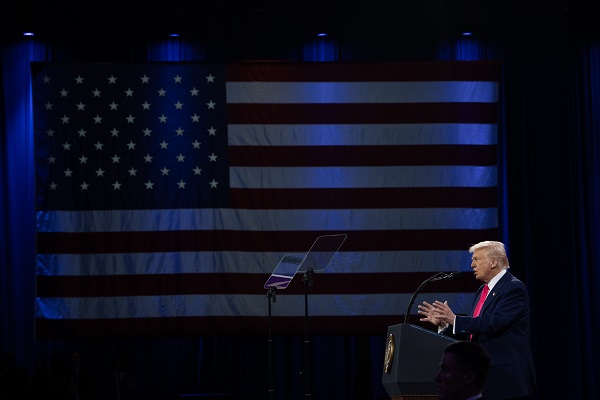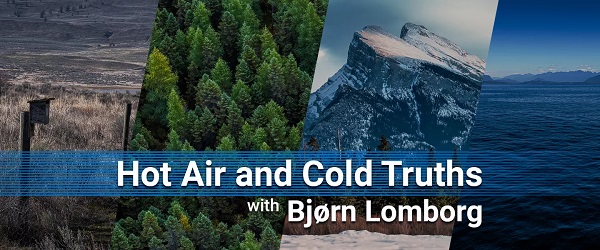Business
‘Controligarchs’ lays bare a nightmare society the globalist elites have in store for humanity
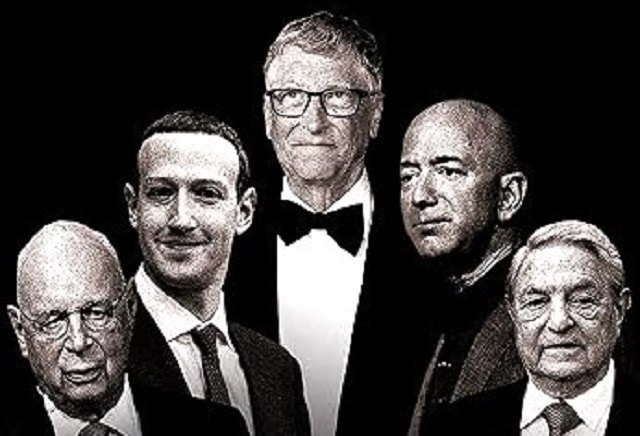
From LifeSiteNews
Journalist Seamus Bruner has published new details on globalist plans to dominate every aspect of our lives, including our food, movement, and transactions
A newly released book gives a fresh, well-documented look into the nightmarish, dystopian society that billionaire globalists are shaping for humanity, in which our every movement and transaction will be tracked, our food will be restricted, and our perception of reality will be heavily manipulated.
Controligarchs: Exposing the Billionaire Class, their Secret Deals, and the Globalist Plot to Dominate Your Life is a thoroughly researched book by investigative journalist Seamus Bruner detailing the global game plan of what he refers to as a new class of oligarchs. They are distinguished from ultra-wealthy elites of the past by the unprecedented level of control they can exercise over the masses through technology, not just over one nation, but over the whole world.
Bruner shows how the globalist elites plan to impose a new kind of serfdom by controlling nearly every facet of our lives, with different billionaires specializing in different areas, beginning with what is most personal to us — our bodies.
After giving a bird’s eye view of the globalists’ plans through the lens of the Great Reset, Bruner dives into each of the globalists’ main levers of power over society, which exert control, respectively, over what goes into our bodies; over home energy use and transportation; over local politics and law enforcement; and over information access and perception.
The journalist first shows how Bill Gates, who already exercises massive sway over world health policy through the World Health Organization (WHO) and investments in vaccines, is also heavily investing in a root source of health: the food supply.
Bruner explains in his book that the “takeover of the food” is accomplished by “controlling the intellectual property of food production through trademarks, copyrights, and patents.” This has already been seen in Gates’ funding and control of seed patents, and in his push for patented synthetic fertilizers, discussed by Bruner, which have caused considerable damage to health and small farms around the world.
The next phase of Gates’ food power grab, which has already begun, involves tighter control over farming through land and water grabs, as well as a push to replace meat consumption with that of synthetic and bug protein.
Bruner emphasizes in his book the importance of control over the water supply, writing, according to the New York Post, “When Gates buys tens of thousands of acres, he is not just buying the land — he is also buying the rights to water below ground. In addition to farms (and the irrigation) and fertilizer, Gates has been hunting for sizable interests in water and water treatment — a crucial component when seeking to control the agricultural industry.”
The journalist also examines how Gates and the “tech oligarchs” are pushing meat alternatives, ostensibly for the sake of the climate.
“I was horrified to learn about the lab-grown hamburgers, fermented fungi protein patties, and even insect-based protein shakes they are hoping the public will consume,” wrote Peter Schweizer, president of the Government Accountability Institute (GAI) and senior editor-at-large of Breitbart News, in his foreword to the book.
Gates has invested millions in companies like Beyond Meat and Impossible Foods, which have already received more than two dozen patents for their synthetic meat and dairy products, and have more than 100 patents pending, according to Bruner. The alternatives aren’t popular now, but about two-thirds of Americans are reportedly willing to try it.
Breitbart reports that Controligarchs also documents the efforts of Mark Zuckerberg to make the Metaverse, a virtual reality platform linked to the internet and operated by Zuckerberg’s Meta Platforms, Inc. (formerly Facebook), “the most addictive product in history.”
Meta and three of its subsidiaries have already been sued by the attorneys general of dozens of U.S. states for having “knowingly designed and deployed harmful features on Instagram and Facebook to purposefully addict children and teens.”
In comparison, the Metaverse, which has been described by the World Economic Forum’s Cathy Li as a kind of virtual world that will “become an extension of reality itself,” and which is designed to feel real with the help of virtual reality (VR) headsets and sensors, has the potential to become far more addictive than mere social media.
While it is still in the process of being developed, progress is steadily being made toward its widespread use. For example, last Thursday, Meta announced a new strategic partnership with China’s Tencent to make VR headsets cheaper and more accessible, according to Breitbart.
And this summer, Apple announced that it would release its own set of augmented reality glasses, called Apple Vision Pro, next year in the U.S.
The plans for the Metaverse get wilder — and for some, creepier. Meta AI researchers are working on a synthetic “skin” “that’s as easy to replace as a bandage,” called ReSkin, as well as “haptic gloves,” so that Metaverse users can “literally feel and grasp the metaverse.”
If it indeed becomes commonplace, as is planned, the Metaverse has enormous implications for society. Perhaps the most serious is that, as John Horvat II has observed, people will feel free to carry out “every fantasy, even the most macabre,” and perceive that they can do things to others “without consequences.”
“Such a lonely world disconnected from reality and the nature of things can feed the unfettered passions that hate all moral restraint. A space like this can quickly go from Alice in Wonderland to insane asylum,” Horvat noted.
Activities performed “in” the Metaverse would also be monitored by the platform’s administrators, drastically diminishing privacy for all Metaverse users.
The assimilation of everyday activities into the World Wide Web via the Metaverse also raises the question of whether any speech performed while “plugged in” to the Metaverse can be regulated by its administrators. Such unprecedented regulatory power would resemble that of a global government, which is an explicit goal of the World Economic Forum, a major supporter of the Metaverse.
The Metaverse may very well be a consolation prize for the restriction of real-life movement and activity, which is planned for all human beings regardless of their participation in the virtual world, according to Bruner.
Bruner shows that the globalists envision a world in which “your every movement” is “tracked and traced by electric vehicles and a smart power grid,” according to Schweizer, with which your thermostat can be turned off without your consent.
In fact, Bruner unveils a $1.2 billion plan by Jeff Bezos to “spy” on citizens using their “smart” homes, which have already been launched by Amazon.
Worse, all “transactions and affiliations” are to be “linked to digital currencies and IDs,” notes Schweizer, plans that have been in the works for years by global bodies such as the European Union (EU) and WHO, as well as nations worldwide.
Most recently, the Group of 20 (G20) — the 19 most influential countries on earth plus the European Union — has endorsed proposals to explore development of a “digital public infrastructure,” including digital identification systems and potentially a centralized digital currency.
Bruner’s description of the globalist plan for our lives is not speculation by any stretch but is based on thorough documentation, including financial filings, corporate records, and admissions from the very globalists themselves. This makes his book a valuable tool not only for those already acquainted with the Great Reset and its accompanying tyranny but for skeptics.
Bruner has advised, “jealously guard your wallet,” “jealously guard your personal data, especially that of your kids,” and “talk to your legislators and Congressmen and tell them to ban your taxpayer money from funding these initiatives.”
Business
Carney’s carbon madness
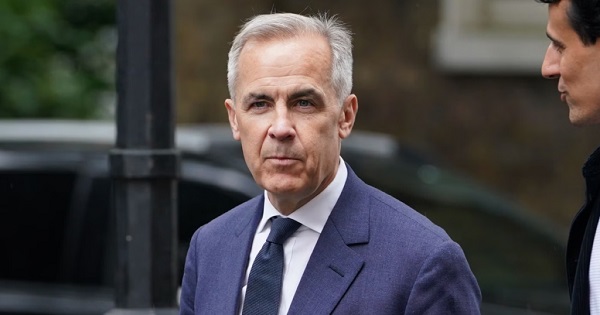
 Dan McTeague
Dan McTeague
Well, we are in quite the pickle.
In nine plus years as prime minister, Justin Trudeau has waged a multi-front war on the consumption and production of hydrocarbon energy, and, with that, on our economy, our quality of life, and our cost of living.
Trudeau zealously pursued and implemented anti-energy policies, most infamously the consumer Carbon Tax, but let’s not forget his so-called ”Clean Fuel” regulations; his Industrial Carbon Tax; his proposed emissions caps; his Electric Vehicle subsidies and mandates; Bill C-59, which bans businesses from touting the environmental positives of their work if it doesn’t meet a government-approved standard; and various other pieces of legislation which make the construction of new pipelines nearly impossible and significantly reduces our ability to sell our oil and gas overseas.
Every one of these policies can be traced back to the pernicious Net Zero ideology which informs them, and in which Trudeau and his bosom buddies — Gerald Butts, Steven Guilbeault, Mark Carney, etc — remain true believers.
And yet, despite those policies contributing to his party’s collapsing poll numbers and Trudeau’s unceremonious ouster, the Liberals are on the verge of naming as his replacement Mark Carney, one of the very Trudeau consiglieri who got us into this mess in the first place!
Now, Carney is currently doing everything in his power to downplay and dance around those aspects of his career which voters might find objectionable. He’s making quite a habit of it, in fact. And on the energy file, he’s being especially misleading, walking back his long-time support of the Carbon Tax — he’s said it has “served a purpose up until now” — and claiming that he intends to repeal it, while finding other ways to “make polluters pay.”
This is nonsense. In fact, Carney is a Carbon Tax superfan, and, if you listen to him closely, his actual critique of the Trudeau tax isn’t that it has made it more expensive to heat our homes, gas up our cars, and pay for our groceries (which it has.) It’s that it is too visible to voters. His vow to “make polluters pay” means, in fact, that he intends to “beef up” Trudeau’s less discussed Industrial Carbon Tax, targeting businesses, which will ultimately pass the cost down to consumers.
He’s even discussed enacting a Carbon tariff, which would apply to trade with countries which don’t adopt the onerous Net Zero policies which he wants to force on Canada.
That’s just who Mark Carney is.
And, unfortunately, Donald Trump’s tariff threats have provoked a “rally round the flag” sentiment, enabling the Liberals to close the polling gap with the Conservatives, with some polls currently showing them neck-and-neck. Which is to say, there is a possibility that, whenever we get around to having an election, anti-American animus could keep the Liberals in power, and propel Carney to the top job in our government.
This is, in a word, madness.
Let us not forget that it was the Liberals’ policies — especially their assault on our “golden goose,” the natural resource sector — which left us in such a precarious fiscal state that Trudeau felt the need to fly to Mar-a-Lago and tell the newly elected president that a tariff would “kill” our economy. That’s what provoked Trump’s “51st state” crack in the first place.
Access to U.S. markets will always be important for Canadian prosperity — they, by leaps and bounds, are our largest trading partner, after all — but without the Net Zero nonsense, we could have been an energy superpower, providing an alternative source of oil and natural gas for those countries leary about relying for energy on less-environmentally conscious, human-rights-abusing petrostates. We could have filled the void created by Russia, when they made themselves a pariah state in Europe by invading Ukraine.
In short, we might have been set up to negotiate with the Trump Administration from a position of strength. Instead, we’re proposing to double-down on Net Zero, pledging allegiance to a program which will make us less competitive and more likely to be steamrolled by major powers, including the U.S. but also (and less frequently mentioned) China.
Talk about cutting off your nose to spite your face! And all in the name of nationalism.
Here’s hoping we wise up and change course while there’s still time. Because, in the words of America’s greatest philosopher, Yogi Berra, “It’s getting late early.”
Dan McTeague is President of Canadians for Affordable Energy.

Support Dan’s Work to Keep Canadian Energy Affordable!
Canadians for Affordable Energy is run by Dan McTeague, former MP and founder of Gas Wizard. We stand up and fight for more affordable energy.
Business
Tariffs by Tuesday: Trump Says There Is ‘No Room Left’ For Any Negotiations On Postponing Tariffs On Mexico, Canada
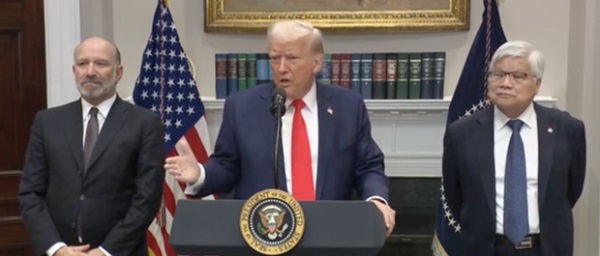

From the Daily Caller News Foundation
By Nicole Silverio
President Donald Trump said Monday that there is “no room left” for any negotiations on postponing tariffs on Mexico, Canada or China in response to their handling of the immigration and fentanyl crisis.
Trump initially planned to impose 25% tariffs on Mexico and Canada and a 10% tariff on China over its role in allowing illegal immigration and fentanyl to pour into the U.S. in record numbers. After postponing these tariffs for a month after Mexico and Canada caved to his requests, the president said he has fully made up his mind to officially impose these tariffs this upcoming Tuesday.
“No room left for Mexico or for Canada. No, the tariffs [are] all set, they go into effect tomorrow,” Trump said. “And just so you understand, vast amounts of fentanyl have poured into our country from Mexico and as you know, also from China where it goes to Mexico and goes to Canada and China also had an additional 10 [percent], so it’s 10 + 10, and it comes in from Canada and it comes in from Mexico and that’s a very important thing to say.”
Dear Readers:
As a nonprofit, we are dependent on the generosity of our readers.
Please consider making a small donation of any amount here. Thank you!
WATCH:
Trump postponed the tariffs on Feb. 3 after Mexican President Claudia Sheinbaum and Canadian Prime Minister Justin Trudeau caved to his requests by increasing their efforts to tackle illegal immigration and fentanyl. Sheinbaum deployed 10,000 National Guard soldiers to the U.S.-Mexico border while Trudeau invested $1.3 billion to crackdown on illegal migration and appointed a “Fentanyl Czar” to oversee a $200 million effort against the drug.
The president announced in a Feb. 27 Truth Social post that he planned to double the tariffs on China to 20% and move forward with the tariffs on Mexico and Canada over the “very high and unacceptable levels” of drugs pouring into the U.S.
“We cannot allow this scourge to continue to harm the USA, and therefore, until it stops, or is seriously limited, the proposed TARIFFS scheduled to go into effect on MARCH FOURTH will, indeed, go into effect, as scheduled,” Trump said. “China will likewise be charged an additional 10% Tariff on that date. The April Second Reciprocal Tariff date will remain in full force and effect. Thank you for your attention to this matter. GOD BLESS AMERICA!”
These three countries are being slapped with tariffs as the U.S. suffers a fentanyl epidemic, with over 21,000 pounds of the deadly drug being seized at the southern border in the fiscal year 2024, according to Customs and Border Protection (CBP). Border agents have seized over 5,400 pounds in the 2025 fiscal year thus far.
At the U.S.-Canadian border, officials encountered over 11,000 pounds of drugs in the 2024 fiscal year and over 3,200 pounds have so far been seized in the 2025 fiscal year, according to CBP data. Over 60,000 pounds and 55,000 pounds of drugs were seized in the 2022 and 2023 fiscal years.
U.S. border officials also encountered over 8.5 million migrants at the southern border during the four fiscal years of former President Joe Biden’s administration. Border crossings at the northern border skyrocketed with over 198,000 encounters and nearly 19,000 arrests occurring in the 2024 fiscal year.
-
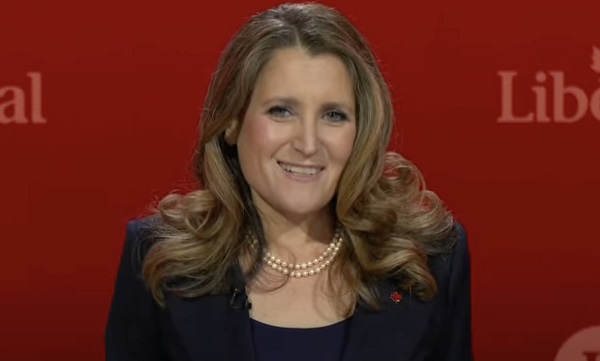
 National2 days ago
National2 days agoWar against the US? Chrystia Freeland says Canada, allies need to build ‘New World Order’ to combat Trump
-
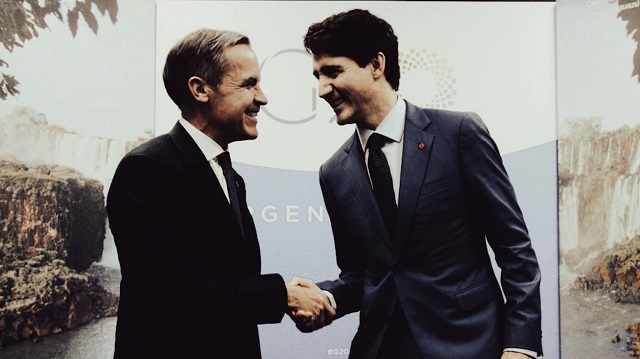
 Opinion2 days ago
Opinion2 days agoLiberal leadership race guarantees Canadian voters will be guided by a clown show for a while yet
-
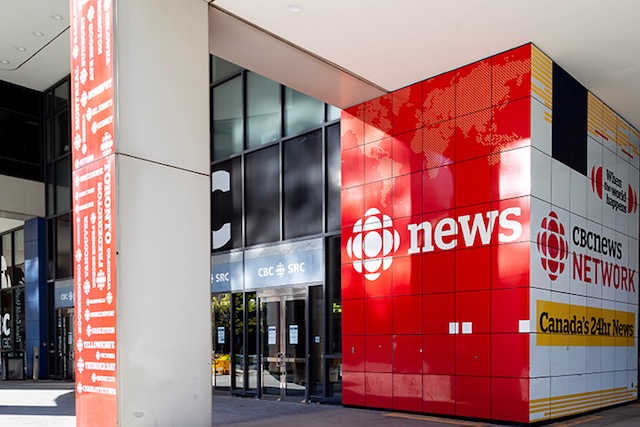
 Business2 days ago
Business2 days agoTaxpayers launching court fight against CBC transparency
-

 Courageous Discourse1 day ago
Courageous Discourse1 day agoZelensky Met with Dems Before He Met President Trump
-

 Business2 days ago
Business2 days agoElon Musk: ‘I’m getting a lot of death threats’ due to DOGE
-

 Crime2 days ago
Crime2 days agoCould the UK’s ‘Grooming Gangs’ operate in Canada?
-
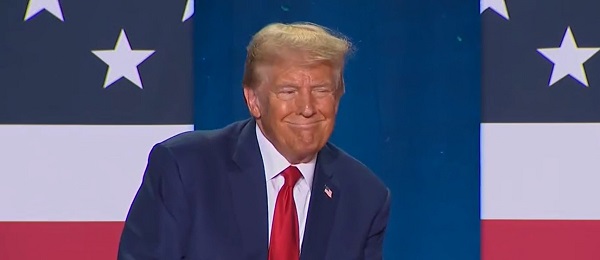
 Alberta2 days ago
Alberta2 days agoCan Trump Revive The Keystone Pipeline?
-

 Alberta2 days ago
Alberta2 days agoAlberta Coordinating law enforcement to fight fentanyl


